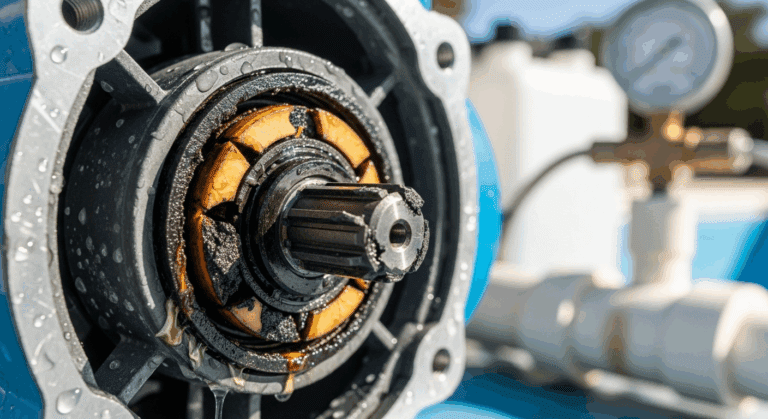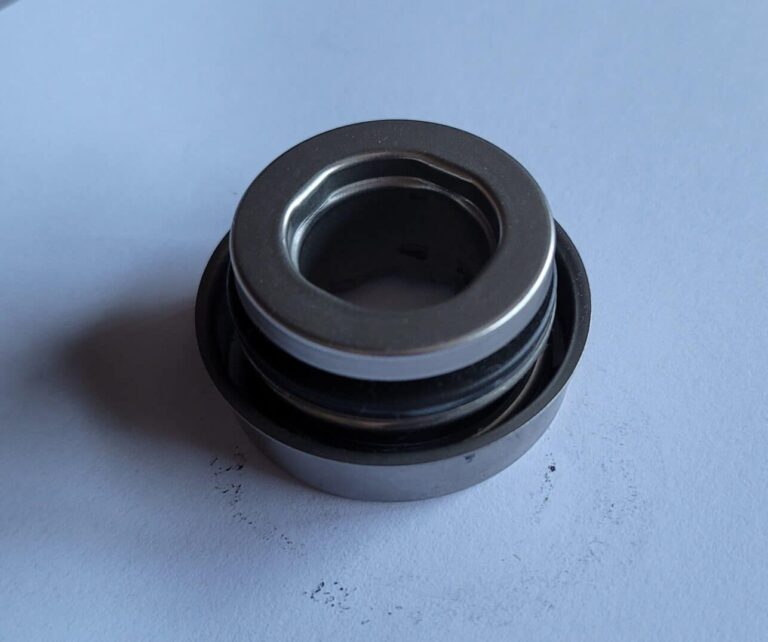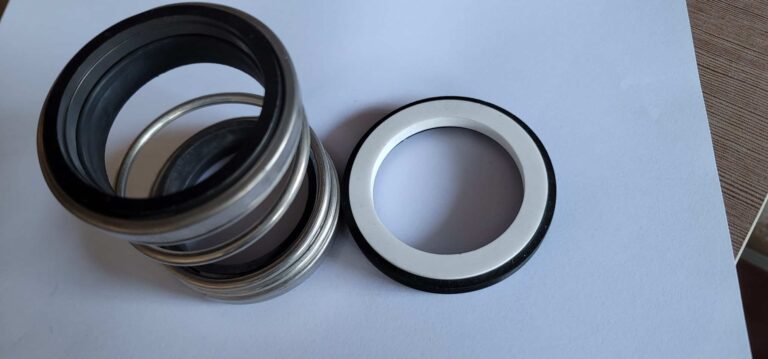Mechanical seal compression is the amount of force applied to compress the seal faces together. You calculate it by measuring the difference between the seal’s free height and its installed height, then using specific formulas based on your seal type.
Mechanical Seal Compression Calculator
The Basic Compression Formula
The standard formula for calculating mechanical seal compression is:
Compression = Free Height - Working Height
Where:
- Free Height = The seal’s length when completely relaxed
- Working Height = The seal’s length when installed and compressed
For spring-loaded seals, you can also use:
Spring Force = Spring Rate × Compression Distance
Let’s say your seal has a free height of 2.500 inches. After installation, it measures 2.375 inches. Your compression is 0.125 inches.
Step-by-Step Calculation Process
Follow these steps to calculate mechanical seal compression accurately. Each step builds on the previous one.
Step 1: Measure Free Height
Remove the seal from its housing completely. Let all springs relax to their natural position.
Measure from the back of the seal to the seal face using calipers. Record this measurement as your free height. Take multiple measurements around the seal to ensure accuracy.
Step 2: Determine Working Height
Install the seal according to manufacturer specifications. Don’t start the equipment yet.
Measure the distance from the seal chamber face to the reference point on the shaft. Subtract the seal’s installed length from this measurement. This gives you the working height.
Step 3: Calculate Compression Distance
Subtract the working height from the free height. This difference is your compression distance.
For example:
- Free Height: 2.500″
- Working Height: 2.375″
- Compression: 0.125″
Step 4: Verify Against Specifications
Compare your calculated compression to the manufacturer’s recommended range. Most seals require compression between 0.100″ and 0.150″.
Adjust the seal position if needed. Use shims or spacers to achieve proper compression.
Types of Mechanical Seals and Their Formulas
Different seal types require different calculation approaches. Here are the most common types and their specific formulas.
Pusher Seals
Pusher seals use springs to maintain face contact. Calculate compression using the basic formula above.
For multiple spring seals:
Total Force = Number of Springs × Individual Spring Rate × Compression
Non-Pusher (Bellows) Seals
Bellows seals don’t slide along the shaft. They flex instead.
Calculate compression as:
Compression = Free Length - (Chamber Depth - Installation Dimension)
Cartridge Seals
Cartridge seals come pre-assembled with preset compression. Verify compression by checking the dimension from the seal face to the reference collar.
Most cartridge seals have compression indicators. A flush indicator means proper compression.
Typical Mechanical Seal Compression Values
| Parameter | Typical Value/Range | Notes/References |
|---|---|---|
| Face-load (new carbon face) | ~30 psi (0.2 N/mm²) | Industry standard new load |
| Face-load (worn carbon face) | ~10 psi (0.07 N/mm²) | End-of-life face loading |
| Spring compression (single) | 50–70 % of free length | Standard for single-spring seals |
| Spring compression (multiple) | ~90 % of free length | Common for multiple-spring seals |
| Axial deflection (single-spring) | ~1.5–3.5 mm | Example crush distance |
| Spring preload pressure | 1.3–2.8 kgf/cm² (0.13–0.28 MPa) | Typical pump seal springs |
| Balanced-seal closure area | ~65–85 % (balance ratio) | Standard balanced designs |
| Installation tolerance | ±1/32″ (±0.8 mm) | Seal setting tolerance |




